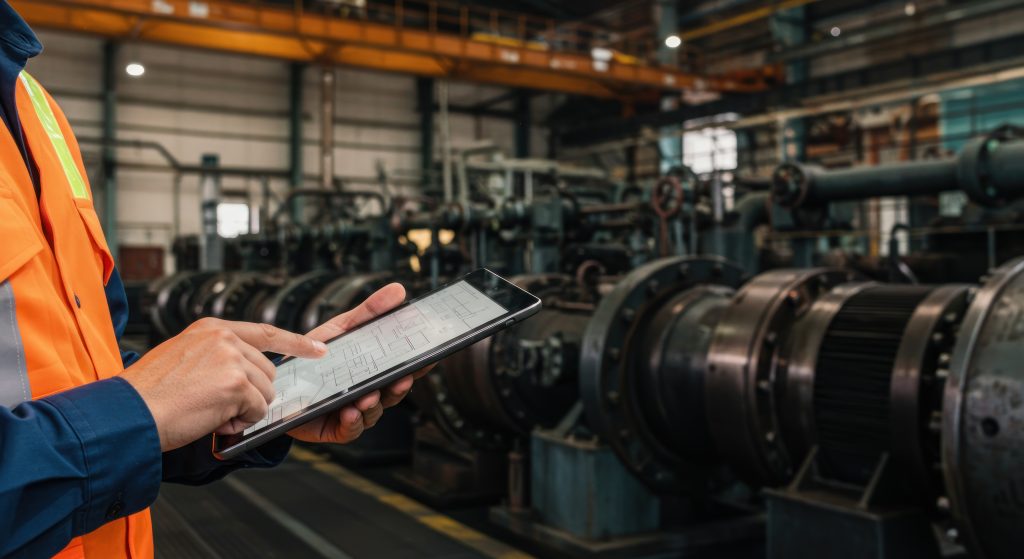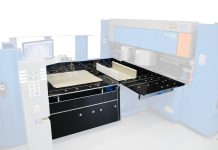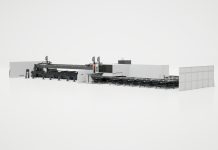Metal fabrication is a centuries-old trade. Although it has existed for a long time, the metalworking sector today is vastly different from what it used to be. The primary driver of this transformation is the increasing implementation of automation technologies.
While the fundamental processes of metalworking have remained stable over the years, companies are progressively depending on automated machinery to execute these tasks. This shift, although not exclusive to fabrication, is seeing particularly strong momentum within the metalworking domain, warranting close attention from industry participants.
Rapid Growth of Automation in Metal Fabrication
Historically, metalworking lagged behind the broader manufacturing sector in terms of automation, but this trend is changing swiftly. In 2023, there were approximately 101,700 industrial robots deployed in metal fabrication operations across the United States. Projections indicate this number will more than triple by 2030.
This surge spans a variety of applications. Processes such as cutting, welding, machining, and material handling have all experienced heightened automation in recent years. In some instances, automated advancements have enabled completely novel workflows, exemplified by the production of 3D-printed metal components.
The sector’s increasing enthusiasm for robotic solutions goes beyond a fad; it signals a fundamental industry-wide shift altering how metal materials and products are manufactured. Industry leaders who have yet to engage robotics at this scale should consider the reasons fueling this growth and its implications moving forward.

What’s Driving the Growth in Metalworking Automation?
The dramatic rise in robotics within metal fabrication can be attributed to multiple converging factors. Understanding these drivers will assist companies in leveraging new technologies effectively.
Enhanced Accuracy
One major impetus behind fabricators’ heavy adoption of automation stems from the superior precision that robotic systems afford compared to manual methods. This advantage is critical as the demand intensifies for reducing waste and minimising errors. Metalworking typically involves repetitive tasks that are vulnerable to human lapses, whereas robots maintain consistent focus and performance without fatigue.
Automated equipment achieves precision levels often unattainable by humans, sustaining these standards continuously. Consequently, fewer defects and scraps are produced. Considering that the U.S. generates around 19.2 million tons of metal waste annually, even modest efficiency improvements can significantly reduce material losses.
Increased Productivity
Automation typically operates at faster speeds than human labour. Its efficiency gains result not only from high operational speed but also from minimising mistakes and the need for rework. Automating repetitive functions enables fabricators to scale production output in response to demand growth without costly expansions of facilities or workforce.
Although some firms worry that automation might displace workers, it primarily helps fill significant skill shortages. The industry currently faces a deficit of roughly 375,000 skilled welders, making robots more of a complement to human labour than a replacement.
IoT integration
The rise of automation is further bolstered by technologies enhancing robots’ practicality. Internet of Things (IoT) connectivity plays a vital role. Equipped with connected sensors, automated systems gain improved accuracy or novel modes of control, resulting in better return on investment for fabricators.

For example, predictive maintenance powered by IoT can extend equipment life. While routine preventive care is known to lengthen machinery lifespan, unnecessary repairs contribute to downtime and costs. IoT-enabled sensors can forecast failures and alert maintenance staff proactively, maximising robot uptime and reducing expenses.
Artificial intelligence capabilities
Incorporating artificial intelligence into metalworking robots yields comparable benefits. Traditional automation often suffers from rigidity; efficient until an unexpected variation disrupts the workflow, causing cascading errors. AI endows robots with adaptability to adjust when deviations occur.
Machine vision systems can detect misaligned parts and instruct robotic arms to modify their operations accordingly. Additionally, AI models can analyse material properties to determine optimal handling strategies instead of applying uniform processes. This flexibility allows robots to collaborate more effectively with humans and cope with dynamic production demands.
Improved workplace safety
Heightened focus on worker safety has also accelerated robotics adoption. The primary metal manufacturing sector recorded an injury rate of 3.9 per 100 workers in 2020—a figure much higher than the average across all industries. Growing awareness makes automation a valuable alternative to performing hazardous manual tasks.
Among the most automatable processes are those carrying the highest risks of accidents. Deploying robots reduces workers’ exposure to dangerous conditions. Moreover, modern robots incorporate AI guidance and IoT connectivity, making them safer than earlier models.
Simplified deployment
The implementation of robotics has become markedly easier over time. Historically, limited technical skills have hindered technology integration in heavy industries like metal fabrication. However, advancements have reduced the expertise required to install and operate these systems, alleviating skill shortages.
Many current automation platforms are modular and support no-code or low-code programming interfaces. This enables organisations with a limited technological background to manage automation solutions without steep learning curves. Eliminating this barrier accelerates investment returns and encourages broader industry adoption.
Recommended Strategies for Metalworking Companies
Given these developments, metal fabrication companies must make strategic choices. While it may still be possible to function without extensive automation today, this reality is unlikely to persist. Robotics are becoming both more valuable and accessible, so companies not adopting them risk competitive disadvantage.
Metalworkers need to capitalise on this potential but should avoid overcommitting upfront. Numerous firms have squandered hundreds of millions on underperforming automation efforts, making a cautious approach advisable.
Success hinges on initiating projects grounded in specific, relevant objectives. Technology adoption solely for its own sake rarely yields positive outcomes. Instead, businesses should identify bottlenecks in current workflows and align these challenges with robotic capabilities to discover best-fit applications.
A deliberate and focused automation roadmap enables companies to deploy robots where they provide maximum impact within their unique operations. From this foundation, expansion can proceed confidently, with initial correct implementation being critical for sustained benefits.
Automation is reshaping metalworking production
Future metal manufacturing processes will be markedly more automated than those of today. Firms ahead of this curve will be better positioned to lead in their markets. Organisations that discern how and where to apply robotics now stand to achieve greater long-term success.




